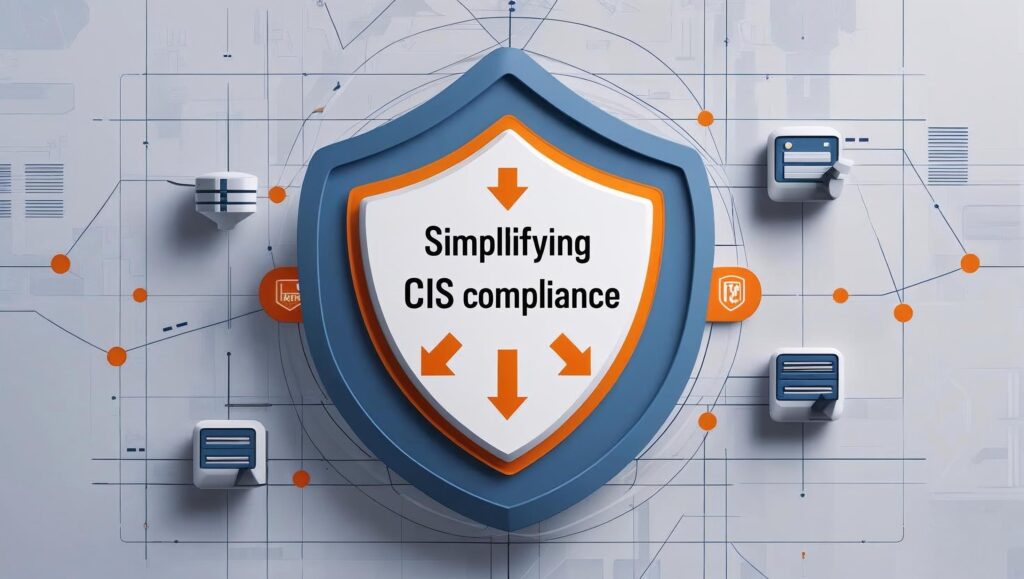Q&A: Fireside Chat with Rekha Shenoy on Optimizing Network Performance for Resiliency

Originally shared on April 24, 2025, by ITProToday, Network Computing Virtual Event, and edited for length and clarity.
This event focused on best practices and strategies for building resilient networks that can withstand disruptions. BackBox CEO, Rekha Shenoy, addressed this during a fireside chat, emphasizing the importance of automating manual processes to reduce downtime costs and keep pace with the frequency of cyber incidents. She also discussed the challenge of integrating real-time vulnerability intelligence into network operations and how BackBox’s approach to automation stands out by concentrating on in-depth network infrastructure knowledge and user-friendliness without necessitating coding expertise.
Q: Considering the high cost of downtime caused by cyber incidents, what measures can companies implement to create a more resilient and secure network infrastructure?
A: I believe the world has changed enough that it’s not just a matter of when an incident occurs or even when we identify incidents that our customers notice first. We have many monitoring tools in today’s enterprises and are discovering numerous incidents. It is a matter of how we keep up with the incidents at today’s pace and keep the business up and running.
When considering downtime, the challenge lies in the constant manual work we must continue performing and the difficulty of keeping pace with the frequency of these incidents. For example, consider corporations’ websites and the number of times they are attacked per hour; also, consider the infrastructure that regularly changes, leading to downtime. It’s an ongoing exercise.
It becomes expensive when we consider the cost of manual labor in triaging and understanding it, along with keeping everything up and running. Then, when we consider the pace at which vulnerabilities are regularly identified and the manual effort required to automate the updating and patching of those systems, we find that this process is still very much in the dark ages.
Regarding the high cost of downtime, the real expense lies in not having reached a point of dependence on systems that deliver automation similar to real humans. The subject matter experts on your staff should be included in this expectation. We must achieve that level of confidence, and as long as we don’t, that represents the costly nature of downtime in today’s world.
Q: What role does network automation play in the AI Ops stack? How critical is it for achieving full operational maturity?
A: The network automation space has evolved in some ways but has remained relatively niche. The challenge is that network automation often suggests we should take our network teams, subject matter experts on the infrastructure itself, and turn them into coders. That’s the gap; as long as we, as vendors, insist on this as a requirement, the market will remain very niche.
How much do customers really automate? It turns out to be a tiny portion, and the effort required to achieve that automation is often significant. If we view network automation as a complicated process, it fails to address our customers’ issues adequately.
You gain valuable insights when considering the AI Ops stack and incorporating these metrics. The important aspect we need to address is that tackling that issue does not require high coding experience. The trend in our industry is towards simplifying the automation of tasks we excel at as network engineers.
Let’s consider network engineers who are experts in one or two vendor types and particularly strong in CLI and UI. They can configure a Palo Alto switch, Fortinet infrastructure, Check Point, or Cisco, creating an automation solution that connects with all those metrics to identify where challenges arise. This can lead to either a fully automated or quick, streamlined solution. I believe this is where network automation is heading, as it provides reliable metrics that can drive improvements.
Q: How can organizations better integrate real-time vulnerability intelligence into their network operations to proactively defend against today’s various attacks?
A: The interesting data point about network vulnerabilities is that they are uniquely complex problems today. Last year alone, over 40,000 CVEs were generated. Those are publicly available vulnerabilities across your entire IT tech stack. That was a 30% increase over the previous year.
The challenge worsens over time because the same AI assisting us is also aiding hackers. The rate at which their vulnerabilities are being exploited is increasing. It may have taken weeks or months to observe this consistent exploitation of a particular CVE or vulnerability; now, it sometimes takes hours or days.
The reality remains the same: AI is assisting the good guys, the vendors and companies, in getting ahead of it, and we should take advantage of this. How are we accomplishing that? Well, there’s improved intelligence regarding which vulnerabilities are being exploited.
The work begins when those reports land on the network infrastructure teams’ desks, and often it takes weeks, months, or even years before some of these vulnerabilities are mitigated. Why is that? It’s because on the network side, it’s uniquely challenging to correlate all of those vulnerabilities against so many different vendors and their extensive pages of guidance.
Then we identify the settings we care about, those we don’t, and, more importantly, those with established workarounds. In other words, configuration settings that you can change to ensure SSH is enabled or something similar could have prevented you from experiencing this problem in the first place.
When we think about integrating real-time vulnerability intelligence, it’s about reducing the person-hours involved in understanding which vulnerabilities apply, what they mean, and what the recommended mitigations are. That’s my shortest path to achieving this without turning it into a massive exercise, taking me away from my day job to solve a problem that often feels like a compliance risk exercise, but is being exploited more rapidly than we’ve ever seen before.
Q: Jose mentioned during his keynote that 70% of enterprises still rely on manual triage. What are the key obstacles hindering enterprises from adopting AI Ops solutions?
A: Trust. How can I trust that this thing will deliver the same quality and meet my expectations of an expert human? You shouldn’t lower that trust bar. You build the expertise, test the expertise, and prove that expertise can deliver the same level of results. You create a system that performs these tasks reliably and alerts you when something fails.
For example, when you need to perform a task hundreds or thousands of times, you require a reliable system to ensure completion. Let’s say it works 995 times and alerts you about the five that failed. The amount of manual labor saved, allowing humans to focus only on the five failures, is significant.
You can’t achieve those outcomes until you start on this path, giving yourself the ability to have a trusted solution that automates some pieces of infrastructure in a way you would have done without turning you into a coding expert, allowing you to examine the five failures.
This is transformational because many never did this regularly, as it took forever. Now, they have a life —a regular day job. That’s transformational.
Q: What makes BackBox’s approach to automation different from other solutions?
A: Backbox is a network cyber resilience platform that offers network automation. It holds extensive knowledge of network infrastructure, enabling you to leverage it for asset lifecycle management and gain complete visibility into your network infrastructure—whether on-premises or in the cloud. Additionally, it allows for a deep understanding of routers, switches, firewalls, SASE, and all components of your network infrastructure.
BackBox can help you back up your network and recover it in a highly advanced, enterprise manner, then configure and harden these systems against CIS or NIST frameworks, and finally monitor those configurations to ensure they remain as desired.
Finally, integrity monitoring can examine anything that impacts your infrastructure, whether it’s a change made by someone or a recently detected vulnerability. It provides the capability to automate remediation for vulnerabilities or changes and to monitor device access.
When you put all those pieces together, BackBox is the first stop for many network infrastructure teams to understand what happened to their infrastructure—we support over 100,000 networks today.
We don’t require our customers to become coding experts. We make it easy for network infrastructure teams to become knowledgeable about their infrastructure, allowing them to rely on us for the automation part. This sets us apart in a market saturated with automation. The barrier to entry is either the team’s expertise or the necessity to invest in numerous services, which we really don’t require.
In summary, what makes BackBox unique is that we focus on network infrastructure first. We know the network infrastructure better than anyone else. We provide intelligence that isn’t typically expected from an automation solution.
Second, we make it user-friendly and adaptable to any number of metrics. When you have these two elements at your fingertips, the ROI becomes easy to measure because our solution delivers on its promises and eliminates manual labor, as you can trust the system to perform as it claims.
Explore how BackBox can help your team automate confidently and build a more resilient network, without the complexity. Book a 30-minute demo for an interactive tour of the BackBox platform.



